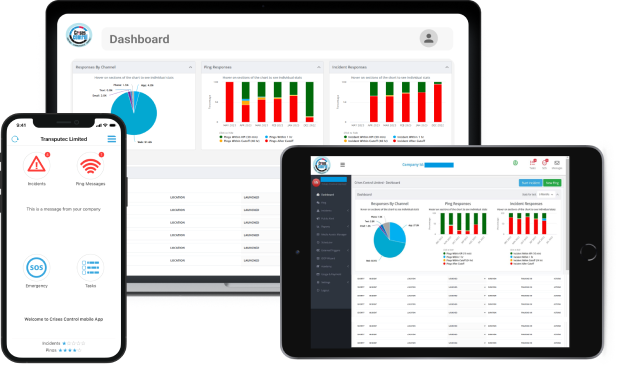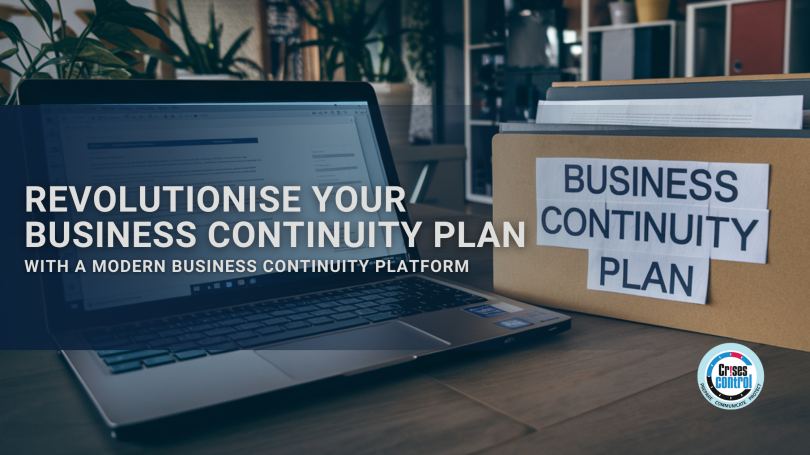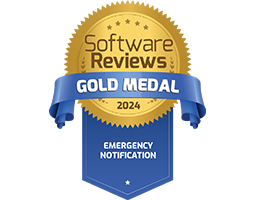Written by Anneri Fourie | Marketing Executive
Every business knows the importance of having a Business Continuity Plan (BCP). When a crisis hits, whether it’s a cyberattack, a natural disaster, or a power outage, your BCP is supposed to guide your organisation through the chaos, helping you recover quickly.
But here’s the problem: if your business continuity plan is a static document sitting in a binder or buried in a forgotten folder on your company’s shared drive, it’s practically useless.
In a real emergency, you don’t have time to flip through pages of procedures or search for an outdated PDF. You need instant access to critical information, automated workflows that kick in immediately, and real-time communication with your team. This is where a Business Continuity Platform becomes a game-changer.
In this blog, we’ll break down why traditional business continuity plans often fail, how a digital platform can transform your crisis response, and why Crises Control is the ultimate solution for keeping your business running, even in the worst-case scenario.
The Problem with Traditional Business Continuity Plans
Many organisations still rely on traditional business continuity plans; static documents outlining what to do in a crisis. While these plans might look great on paper, they often fail in real-world scenarios. Here’s why:
1. Finding Critical Information Takes Too Long
Imagine your company suffers a ransomware attack, and all your systems are locked. Employees scramble to find the continuity plan, but by the time they locate the right section, valuable minutes have been wasted. In a crisis, every second counts.
A static business continuity plan is like a roadmap that only works when you have time to stop and read it. But in a real emergency, you need GPS-style guidance; instant instructions that tell you what to do next.
2. Your Plan is Outdated Before You Even Need It
As businesses evolve, new risks emerge, staff change, and processes get updated. If your continuity plan isn’t regularly reviewed and updated, it quickly becomes outdated and irrelevant.
Take the 2024 British Airways IT system failure as an example. The airline faced widespread delays and cancellations, impacting passengers worldwide. The disruption stemmed from outdated IT systems that were unable to handle the magnitude of the issue. Despite having a business continuity plan in place, the airline struggled to manage the crisis effectively. The result? Severe operational disruption, missed connections, and reputational damage. This incident highlighted the critical need to modernise business continuity plans and ensure they’re equipped to address evolving risks.
A digital Business Continuity Platform ensures your plan stays up to date, automatically adjusting as your business grows and changes.
3. Communication Breakdowns Lead to Chaos
During a crisis, communication failures can turn a manageable situation into a disaster. If you’re relying on emails, phone trees, or WhatsApp messages to coordinate your team, you’re asking for trouble.
A Business Continuity Platform integrates Mass Notification Software, ensuring instant alerts across SMS, email, push notifications, and voice calls, so everyone knows what to do, when they need to do it.
4. No Visibility on Execution
A business continuity plan is only effective if it’s followed correctly. But with traditional plans, there’s no way to track who’s doing what.
Let’s say your office experiences a fire. Your plan states that specific employees must evacuate staff, secure critical documents, and notify emergency services. But how do you know these steps are actually happening?
A Business Continuity Platform provides real-time tracking, allowing managers to monitor progress and make sure every task is completed.
5. Compliance is a Nightmare
If your organisation operates in a regulated industry, you’re required to prove that your business continuity plan is up to standard.
Manually tracking compliance can be a time-consuming and error-prone process. A digital platform simplifies this by keeping an audit trail of every action taken, helping you meet ISO standards, GDPR, and other regulatory requirements with ease.
How a Business Continuity Platform Solves These Issues
A Business Continuity Platform replaces outdated, static plans with real-time, interactive tools that enhance resilience. Here’s how:
1. Instant Access from Anywhere
A cloud-based Business Continuity Management Software ensures that employees can access the latest plans from any device, anywhere in the world. This means that even if your office systems go down, your team can still respond effectively.
2. Automated Incident Response
With a digital platform, pre-configured response workflows can be triggered automatically. Instead of waiting for managers to give instructions, the system ensures that tasks are assigned, alerts are sent, and recovery steps begin immediately.
3. Mass Notification Software for Instant Alerts
A Business Continuity Platform integrates a Mass Notification System, allowing organisations to send real-time alerts via:
- SMS
- Push notifications
- Voice calls
This ensures that employees, stakeholders, and emergency teams receive critical updates instantly, preventing miscommunication and delays.
4. Live Incident Management and Task Tracking
An advanced platform includes Incident Management Software that enables organisations to:
- Assign tasks to specific teams
- Monitor progress in real-time
- Track incident resolution times
- Generate post-incident reports for analysis
This provides full visibility, ensuring that every response step is executed properly.
5. Compliance and Audit-Ready Reporting
A digital Business Continuity Platform simplifies compliance tracking by maintaining automated logs of all incidents, responses, and corrective actions.
How Crises Control Helps Businesses Stay Resilient
Crises Control offers an all-in-one Business Continuity Platform designed to help organisations manage disruptions effectively. Here’s why businesses trust Crises Control:
Cloud-Based Business Continuity Management
- Secure platform accessible from anywhere
- Ensures business continuity plans are always up to date
- Eliminates reliance on outdated documents
Automated Incident Management
- Customisable workflows for rapid response
- Task automation for efficiency
- Real-time dashboards for monitoring incidents
Powerful Mass Notification System
- Multi-channel alerts for employees and stakeholders
- Pre-configured message templates for fast deployment
- Two-way communication for real-time updates
Live Reporting and Compliance Tracking
- Full visibility into crisis response performance
- Post-incident analysis for future improvements
- Meets ISO 22301 and GDPR compliance requirements
Seamless Integration with Existing Systems
- Compatible with third-party applications
- API integrations for enhanced functionality
- Easy deployment with minimal disruption
The Cost of Inaction: What Happens If You Stick to a Static Plan?
If you don’t upgrade to a digital Business Continuity Platform, you risk:
- Increased Downtime: Every minute of operational disruption costs money. Without automation, recovery takes longer.
- Reputational Damage: Customers lose trust if your organisation fails to manage a crisis effectively.
- Legal and Compliance Risks: Non-compliance with industry regulations can result in fines, lawsuits, and reputational harm.
- Poor Employee Coordination: Without clear, real-time communication, teams may be left confused about their roles during a crisis.
Conclusion: Future-Proof Your Business with a Digital Platform
A traditional business continuity plan is no longer enough. To stay ahead of disruptions, minimise downtime, and protect your revenue, you need a Business Continuity Platform.
Crises Control offers a cutting-edge, cloud-based solution that integrates Business Continuity Management, Mass Notification, and Incident Management into a single, easy-to-use platform.
Don’t wait until a crisis exposes the weaknesses in your plan.
Get a free personalised demo today and see how Crises Control can keep your business running, no matter what happens.
Request a FREE Demo








